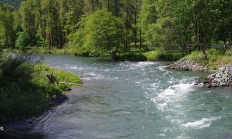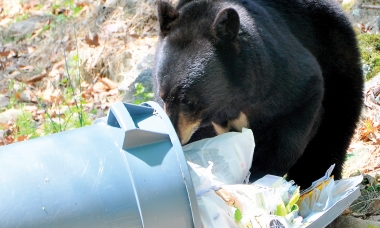
Search myodfw.com



Whether you’re out the night before preparing for your morning hunt, or studying the habits of a flock throughout the year, scouting ahead of your hunt will help you find more birds during your hunt. Use optics to spot birds With binoculars or a spotting scope you’ll be able to spot and study birds from a distance without spooking them. Don't be in a hurry when watching turkeys through binoculars or a spotting scope. The birds won’t know you’re there, so take time to study the hens and toms in the flock. See if there’s a big tom you want


Need to figure out controlled hunts, find a place to clam, learn how to fish or get directions to a wildlife area? We've got information on all that and more, straight from ODFW biologists and other accomplished hunters, anglers and wildlife watchers. Header image by Dave Budeau



Wild turkeys are not native to Oregon but were first successfully introduced in 1961. Since then more than 10,000 turkeys have been transplanted to locations all over Oregon and continue to thrive in most game units through the state. Turkey hunting is a popular activity in Oregon and has grown more than ten-fold since a statewide spring season opened in 1987. Oregon’s six-week spring turkey season is among the most liberal in the United States. Hunters have an opportunity to take up to three gobblers during the spring season and up to two birds during the fall, one of which


MARINE WILDLIFE VIEWING December 4, 2025 The Oregon coast is a great place to come and view a variety of wildlife. Enjoy the great diversity of life: from giant whales and barking sea lions, to majestic bald eagles and diving pelicans, to showy Harlequin ducks and flocking shorebirds, to the tiny anemones and crabs inhabiting tidepools. There is always something new to discover. Visit our wildlife viewing map for locations to visit and view wildlife along the Oregon coast. Maximize your viewing of coastal creatures by bringing binoculars for close-up views. Beach Safety: http://www.oregon.gov/OPRD/PARKS/Pages/beach_safety.aspx Whales, orcas and porpoises Whales migrate
ODFW staff in The Dalles contacted the local trash service provider for approval to modify trashcans. Please do not lock your trashcan or service providers may charge a “locked fee.” Use a carabiner instead. Your trashcan must be strong enough for a bear to stand on. Test yours before modification. If it collapses or the lid bends easily, it will not keep a bear out. Materials and Tools • (1) Heavy-duty Trashcan • (16) #10-24 x 3/8" Nuts • (16) 3/8" Washers • (16) #10-24 x 3/8" Machine Screws • (2) Steel Fixed-Eye Hasps (hinged or flat)* • (1) Wrench



The variety of available shotgun shells can be dizzying, and there are more being introduced all the time. But taking into account the size of your shotgun and your intended target will help you narrow the choices to a more manageable number. Where to find shell information When you buy shells, the box they’re in will be labeled with the gauge, shell length, amount of shot inside the shell (in ounces), the size of shot and how many feet per second the load travels. Some of this information may also be printed on each shell to help you identify loose

